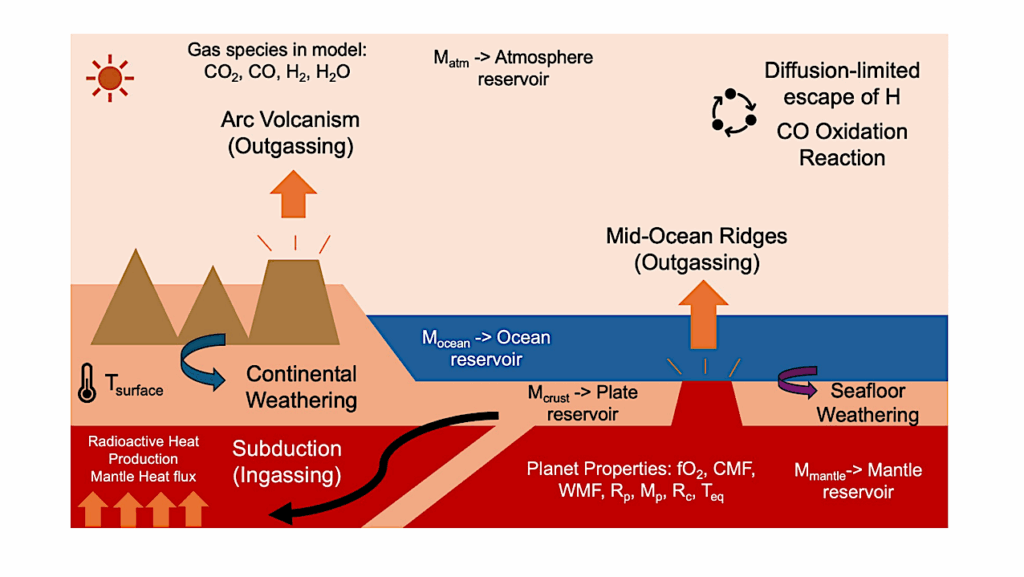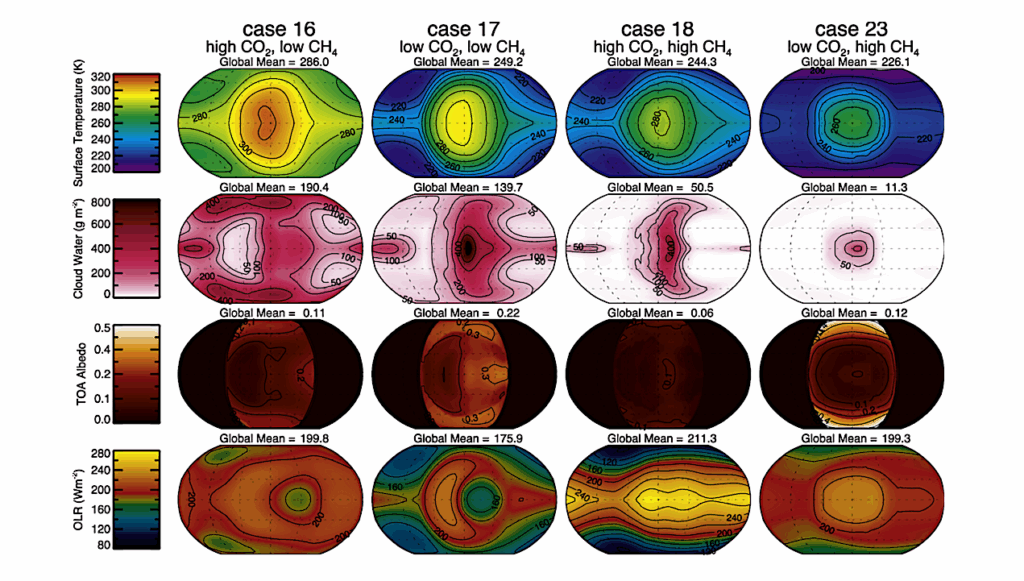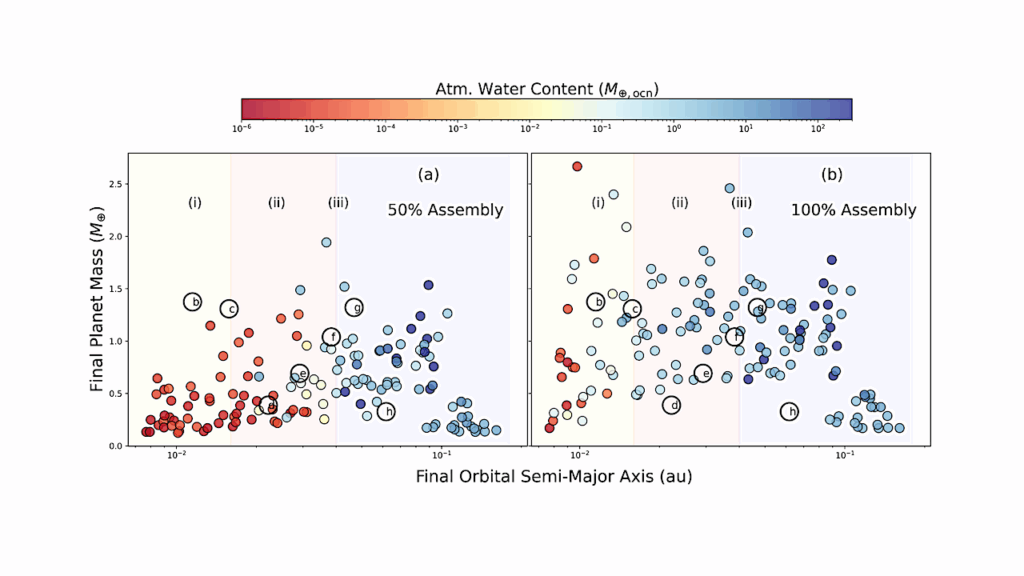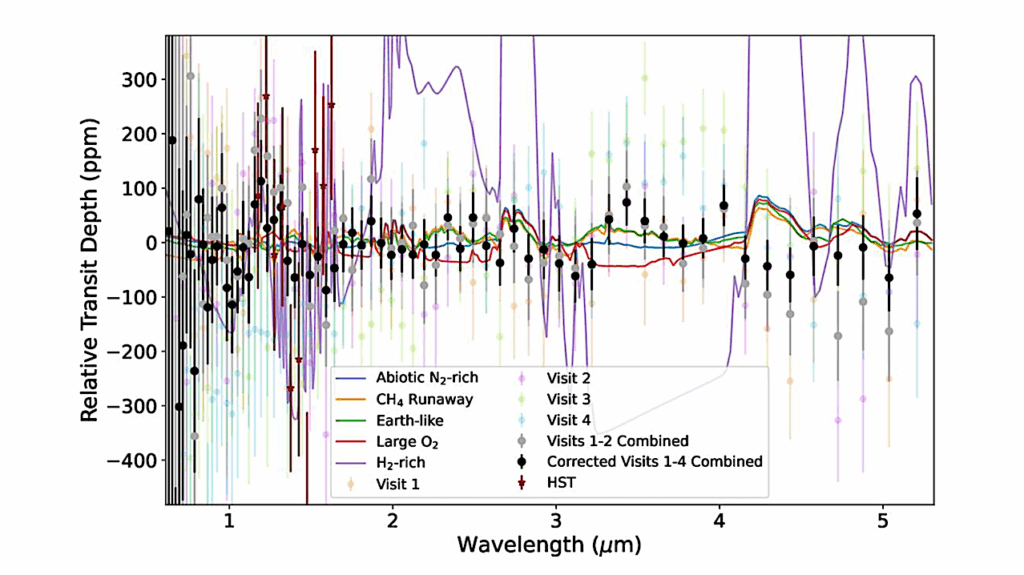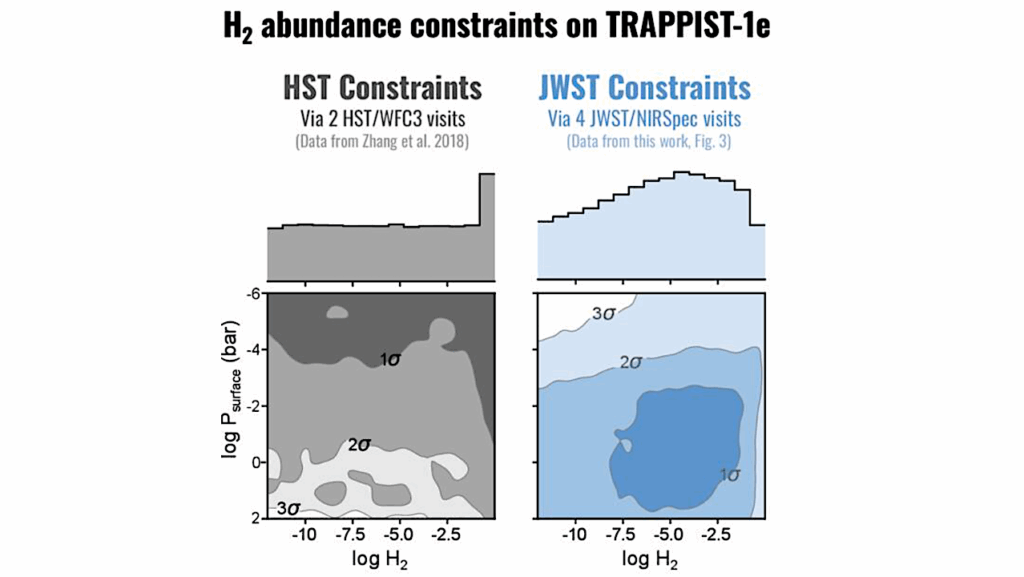Do the TRAPPIST-1 Planets Have Hydrogen-rich Atmospheres?

Recently, transmission spectroscopy in the atmospheres of the TRAPPIST-1 planets revealed flat and featureless absorption spectra, which rule out cloud-free hydrogen-dominated atmospheres. Earth-sized planets orbiting TRAPPIST-1 likely have either a clear or a cloudy/hazy hydrogen-poor atmosphere.
In this paper, we investigate whether a proposed formation scenario is consistent with expected atmospheric compositions of the TRAPPIST-1 planets. We examine the amount of a hydrogen-rich gas that TRAPPIST-1-like planets accreted from the ambient disk until disk dispersal. Since TRAPPIST-1 planets are trapped into a resonant chain, we simulate disk gas accretion onto a migrating TRAPPIST-1-like planet.
We find that the amount of an accreted hydrogen-rich gas is as small as 10−2 wt% and 0.1 wt% for TRAPPIST-1b and 1c, 10−2 wt% for 1d, 1 wt% for 1e, a few wt% for 1f and 1g and 1 wt% for 1h, respectively. We also calculate a long-term thermal evolution of TRAPPIST-1-like planets after disk dissipation and estimate the mass loss of their hydrogen-rich atmospheres driven by a stellar X-ray and UV irradiation. We find that all the accreted hydrogen-rich atmospheres can be lost via hydrodynamic escape.
Therefore, we conclude that TRAPPIST-1 planets should have no primordial hydrogen-rich gases but secondary atmospheres such as a Venus-like one and water vapor, if they currently retain atmospheres.
Yasunori Hori, Masahiro Ogihara
(Submitted on 12 Dec 2019)
Comments: 10 pages, 3 figures, accepted for publication in ApJ
Subjects: Earth and Planetary Astrophysics (astro-ph.EP)
Cite as: arXiv:1912.05749 [astro-ph.EP] (or arXiv:1912.05749v1 [astro-ph.EP] for this version)
Submission history
From: Yasunori Hori
[v1] Thu, 12 Dec 2019 03:21:07 UTC (2,070 KB)
https://arxiv.org/abs/1912.05749
Astrobiology, Astrochemsitry


